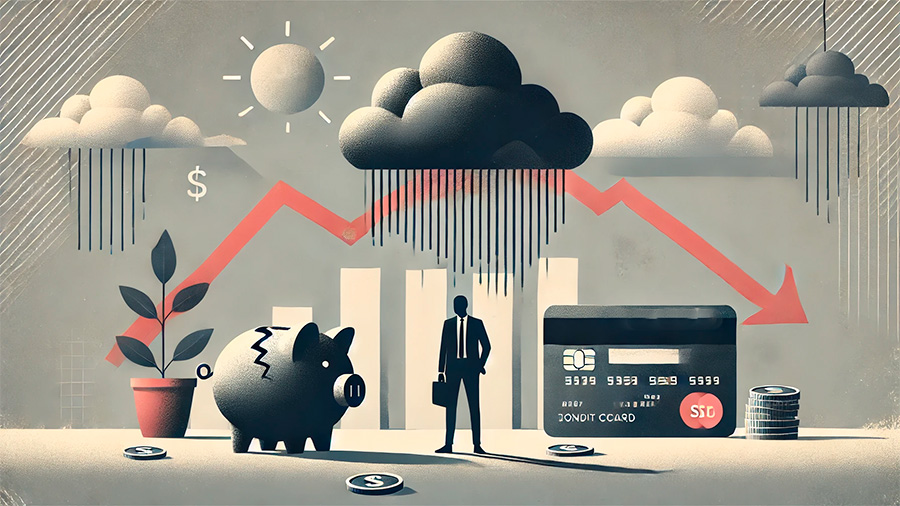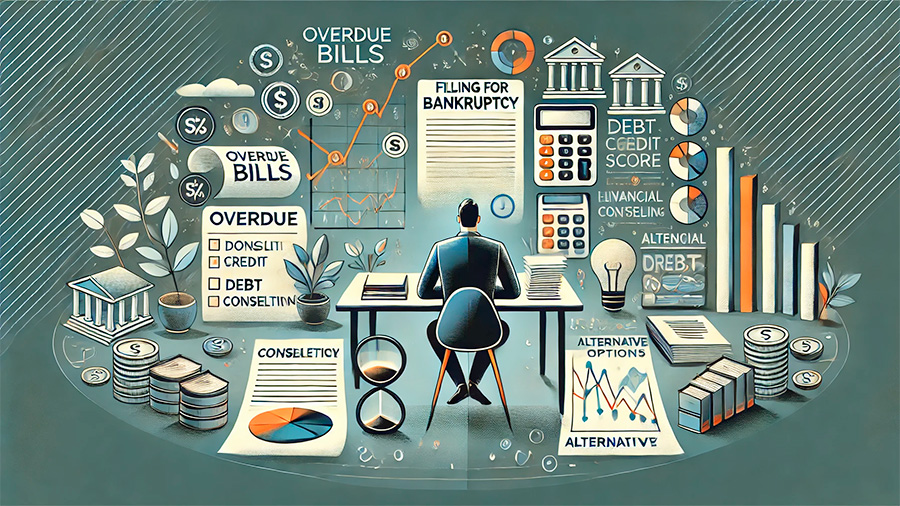Filing for bankruptcy is often seen as a last resort for individuals and businesses struggling with overwhelming debt. While it provides a legal pathway to debt relief and protection from creditors, it also carries significant long-term financial consequences. Understanding the advantages and disadvantages of bankruptcy is essential for making an informed decision about whether it’s the right solution for your financial situation. This article examines the key benefits and drawbacks to help you evaluate your options.
Advantages of Filing for Bankruptcy
Bankruptcy offers immediate relief for those burdened by insurmountable debt. By halting collection efforts and providing a clear structure for resolving obligations, it allows individuals and businesses to regain control over their finances. Here are some of the most significant benefits of filing for bankruptcy:
Debt Relief and Discharge
One of the primary advantages of bankruptcy is the discharge of eligible debts. Depending on the type of bankruptcy filed—Chapter 7 or Chapter 13 in the U.S., for example—certain unsecured debts such as credit card balances, medical bills, and personal loans can be eliminated. This provides a fresh financial start, free from the pressure of unmanageable debt.
- Chapter 7: Liquidation of non-exempt assets to discharge unsecured debts.
- Chapter 13: Reorganization of debt into a manageable repayment plan over 3-5 years.
Debt discharge is particularly beneficial for individuals whose liabilities far exceed their assets and income, offering them a chance to rebuild without persistent financial strain.
Protection from Creditors
Filing for bankruptcy triggers an automatic stay, which legally prohibits creditors from pursuing collection actions. This includes stopping wage garnishments, foreclosures, repossessions, and harassing phone calls. The automatic stay provides immediate relief, giving filers time to reorganize their finances without external pressure.
Opportunity for Financial Rebuilding
Although bankruptcy affects credit scores, it also creates an opportunity to rebuild financial health. Many individuals find it easier to manage finances after bankruptcy, as they are no longer overwhelmed by unpayable debts. With proper budgeting and responsible credit use, it’s possible to improve credit scores over time.
- Access to secured credit cards or loans can help reestablish credit.
- Eliminating debt allows for better financial planning and saving.
Bankruptcy serves as a reset button, helping individuals regain stability and work toward long-term financial goals.

Disadvantages of Filing for Bankruptcy
Despite its advantages, bankruptcy comes with significant drawbacks that can impact your financial future. These consequences should be carefully considered before making a decision to file.
Impact on Credit Score
Filing for bankruptcy significantly damages your credit score, making it more difficult to secure loans, credit cards, or even rental agreements. A Chapter 7 bankruptcy remains on your credit report for up to 10 years, while Chapter 13 stays for 7 years. This long-term mark can affect your ability to access affordable credit or qualify for favorable terms.
- Interest rates on future loans are likely to be higher.
- Obtaining a mortgage or auto loan may require additional effort or larger down payments.
Rebuilding credit takes time and disciplined financial management, which can be challenging for those emerging from bankruptcy.
Loss of Assets
Under Chapter 7 bankruptcy, non-exempt assets may be liquidated to repay creditors. While many essentials, such as a primary residence or personal belongings, are protected under exemption laws, luxury items or second properties are often at risk. This can result in a significant loss of property and financial security.
Chapter 13, while less invasive, requires strict adherence to a repayment plan. Missing payments during this period could result in further penalties or dismissal of the bankruptcy case.
Public Record and Social Stigma
Bankruptcy filings are part of the public record, meaning anyone can access information about your financial status. This can lead to embarrassment or stigma, especially in professional or personal settings. Additionally, some employers or landlords may view bankruptcy negatively, creating challenges for job or housing applications.
Limited Debt Coverage
Not all debts are eligible for discharge in bankruptcy. Obligations such as student loans, child support, alimony, and certain tax debts typically cannot be eliminated. This means that even after filing for bankruptcy, some financial burdens may persist, requiring careful planning to address.

Factors to Consider Before Filing for Bankruptcy
Filing for bankruptcy is a significant decision that should not be taken lightly. Assessing your financial situation and exploring alternatives can help determine if bankruptcy is the best course of action. Here are key factors to consider:
Alternatives to Bankruptcy
- Debt consolidation: Combining multiple debts into a single, manageable loan.
- Negotiation: Working directly with creditors to reduce balances or interest rates.
- Credit counseling: Seeking guidance from certified professionals to create a repayment plan.
These options may provide relief without the long-term consequences associated with bankruptcy.
Eligibility Requirements
Different types of bankruptcy have specific eligibility criteria. For example, Chapter 7 requires passing a means test to demonstrate financial hardship, while Chapter 13 involves proving a steady income to adhere to a repayment plan. Understanding these requirements ensures that you choose the most suitable option for your situation.
Long-Term Financial Planning
Filing for bankruptcy should be part of a broader financial recovery strategy. Consider how you will rebuild credit, manage expenses, and avoid future financial pitfalls. Seeking advice from financial planners or bankruptcy attorneys can help create a comprehensive plan for recovery.
Conclusion
Bankruptcy offers both relief and challenges for those struggling with debt. While it provides a fresh financial start and protection from creditors, it also carries long-term consequences such as credit damage, asset loss, and public scrutiny. Carefully weighing the pros and cons, understanding your options, and seeking professional advice are essential steps in determining whether bankruptcy is the right path for you. By approaching the process with caution and planning, you can work toward financial stability and a more secure future.


